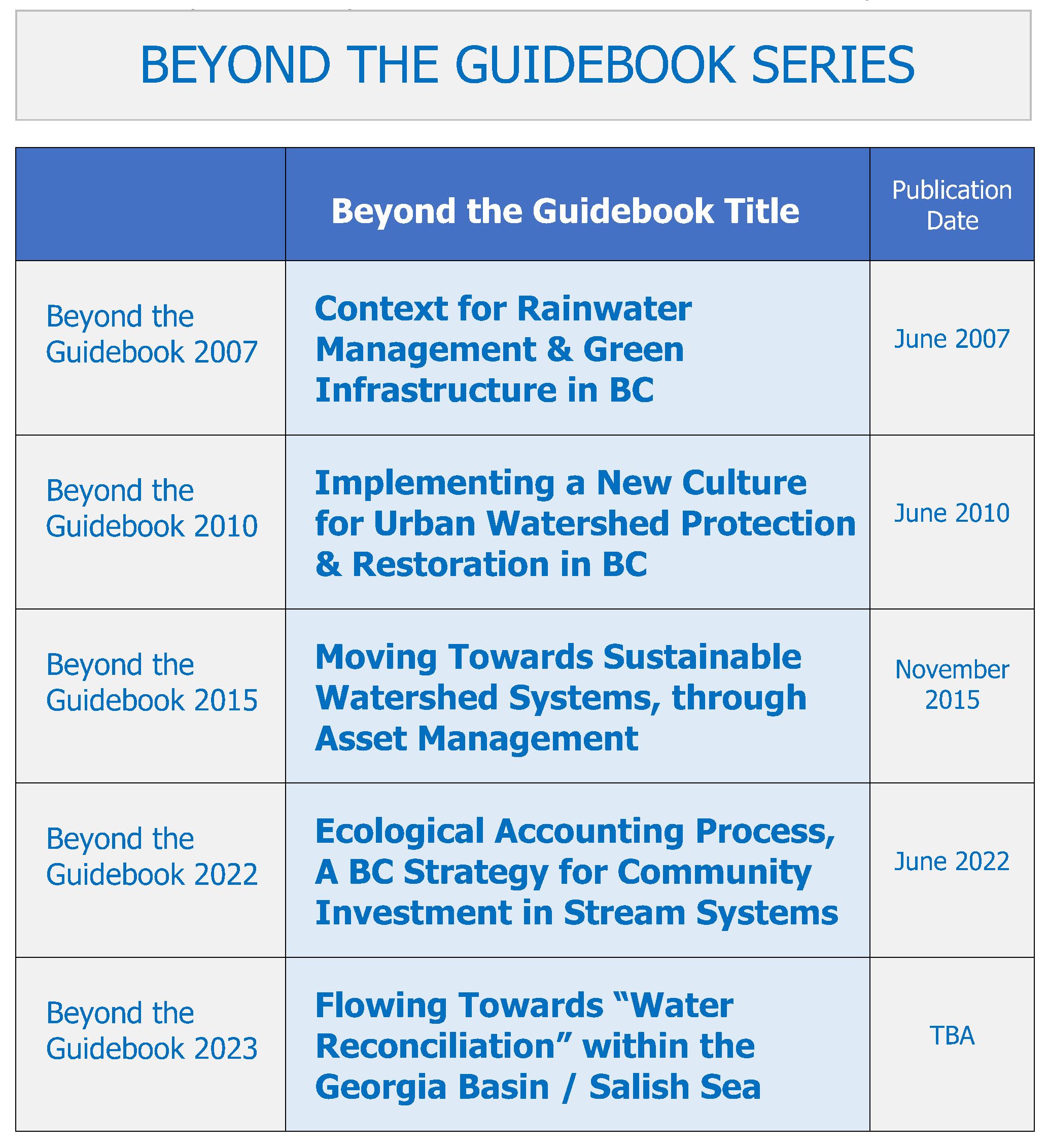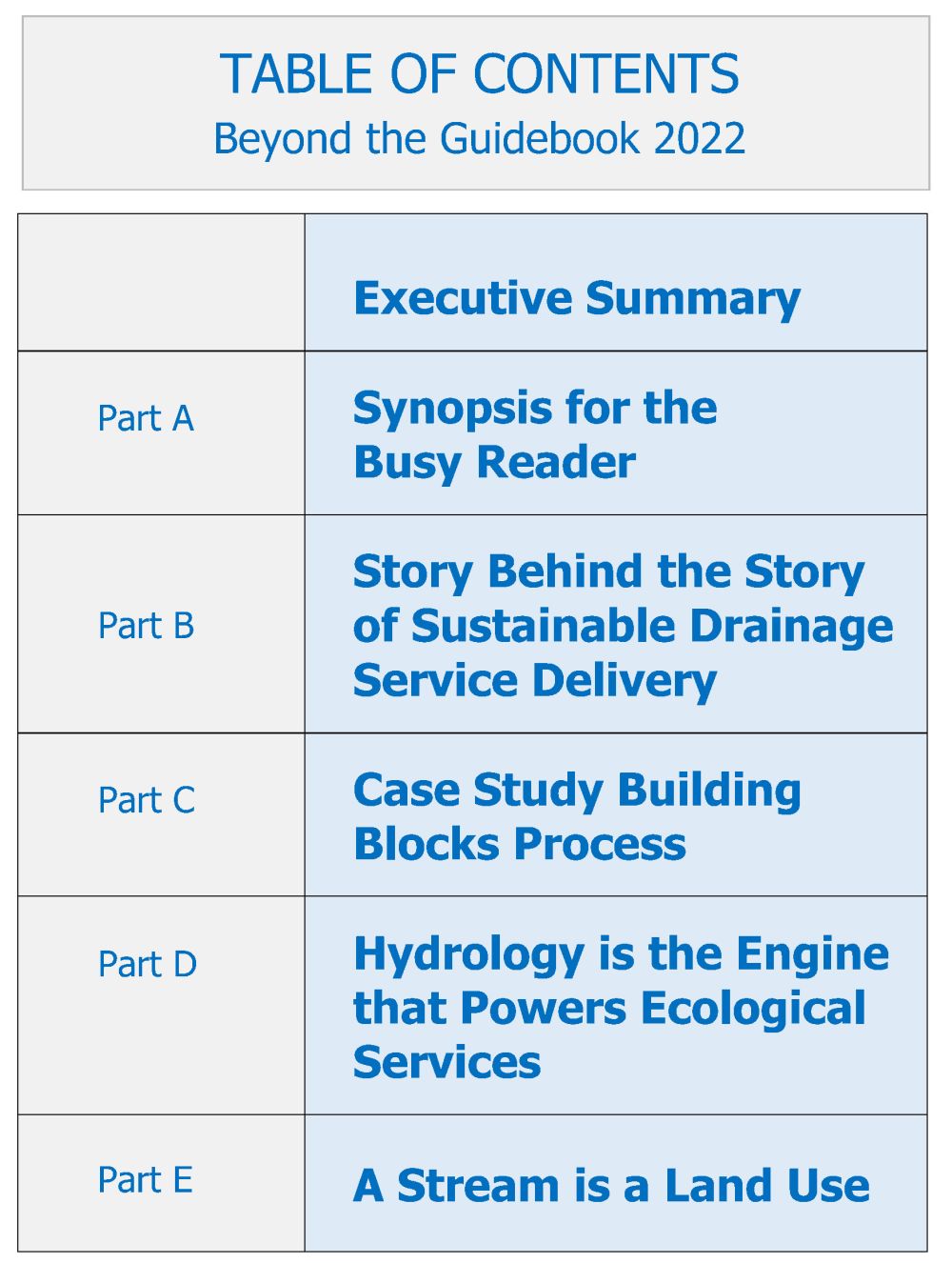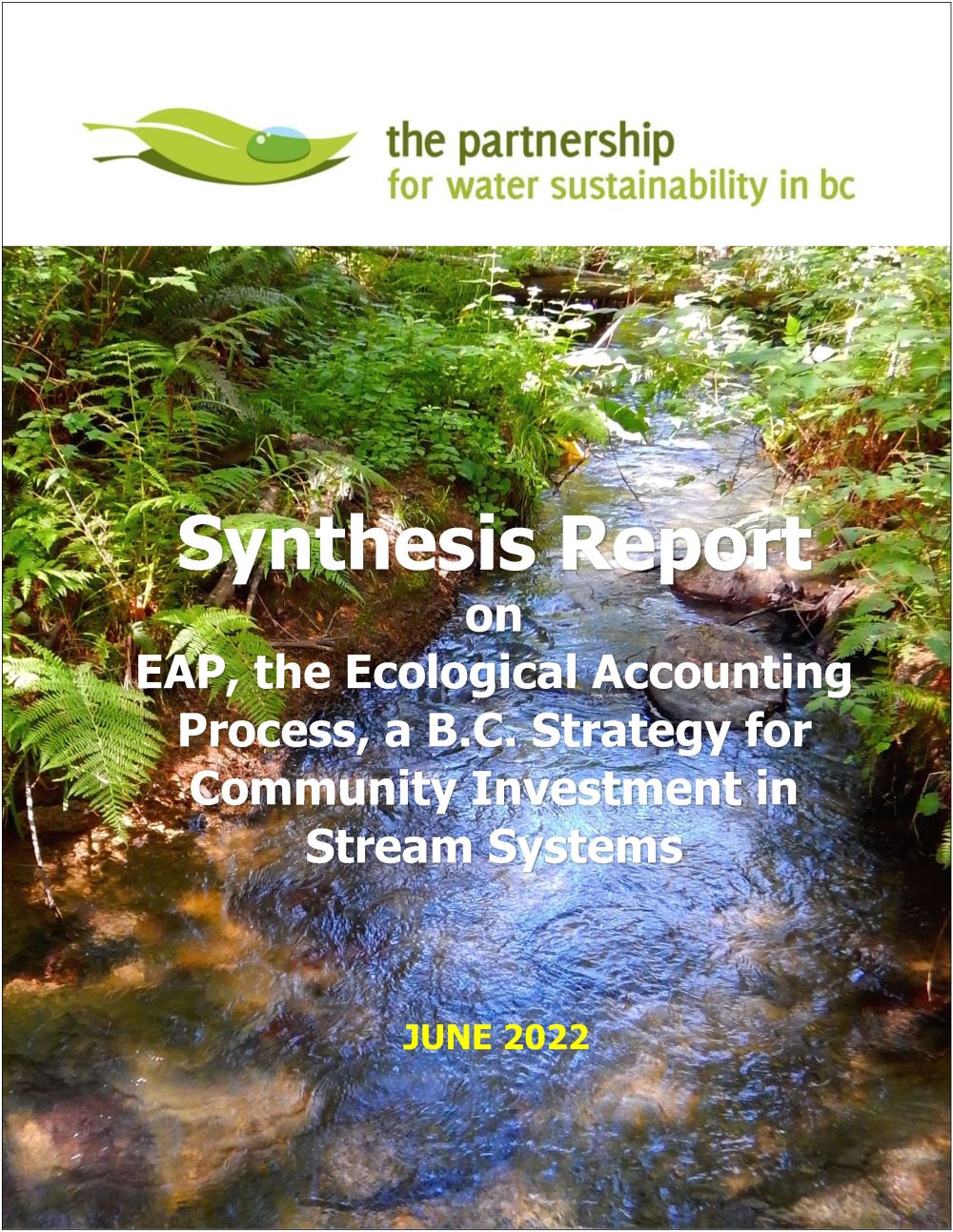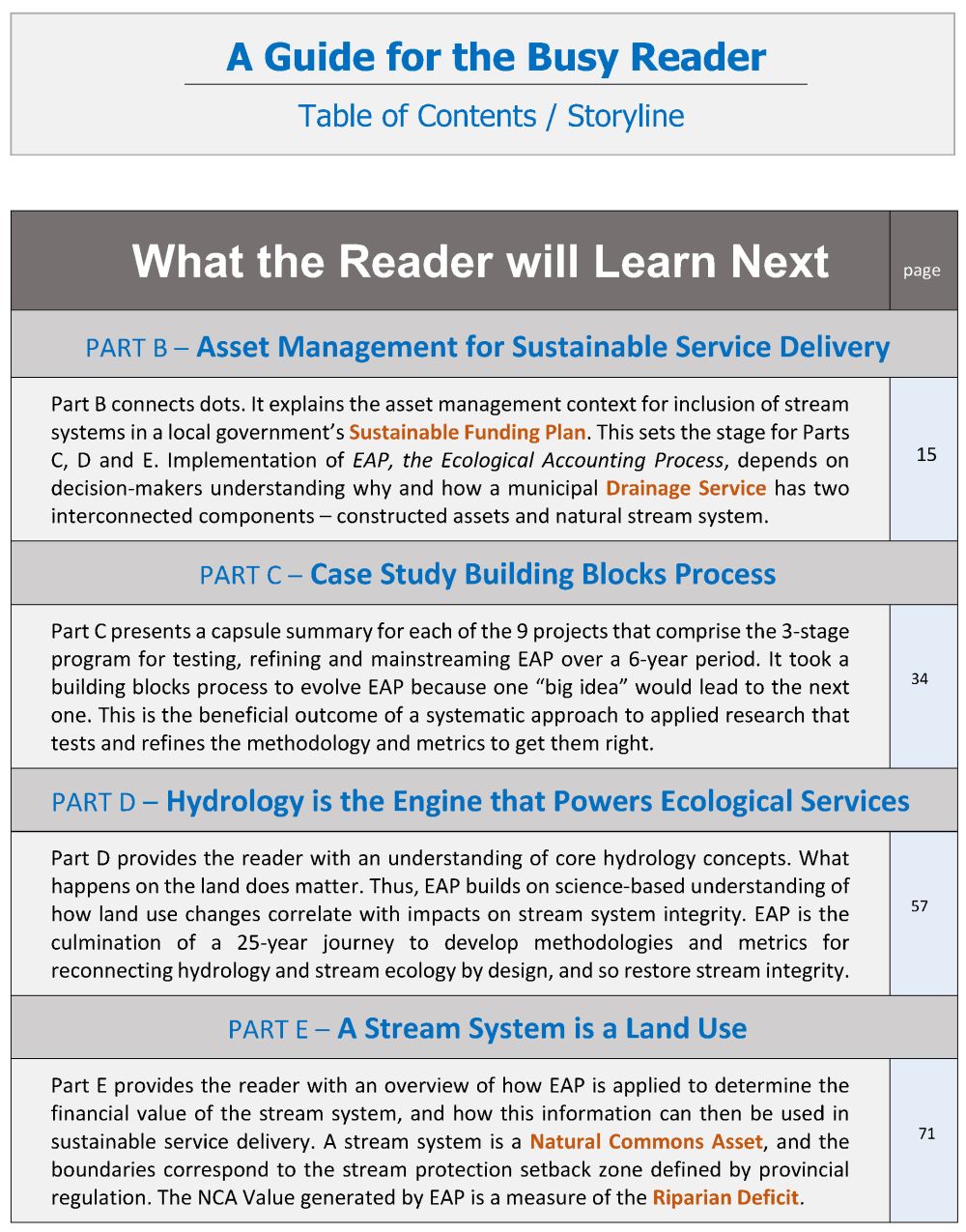HOW WE CHANGE WHAT WE ARE DOING ON THE LANDSCAPE: Synthesis Report on EAP, the Ecological Accounting Process, a BC Strategy for Community Investment in Stream Systems (released by the Partnership for Water Sustainability, June 2022)
Note to Reader:
In 2016, the Partnership for Water Sustainability in British Columbia embarked upon a 6-year program of applied research to evolve EAP, the Ecological Accounting Process, through a 3-stage building blocks process of testing, refining, and mainstreaming the methodology and metrics for financial valuation of stream systems. The program involved 9 case studies and 13 local governments and yielded 19 “big ideas” or foundational concepts. The program goal was to answer the question, how much should communities budget each year for maintenance and management of stream systems.

EAP helps local government answer this question: How much should communities invest in protection of stream systems?
In the edition of Waterbucket eNews published on June 14, 2022, the Partnership announced release of its Synthesis Report on the Ecological Accounting Process, a BC Strategy for Community Investment in Stream Systems. It is a distillation of over 1000 pages of case study documentation into a storyline that is conversational and written for a continuum of audiences that includes land use practitioners, asset managers, stream stewards, and local government decision-makers.
“EAP has evolved through a set of nine demonstration applications, or case studies, during the years 2016 through 2022,” reports Tim Pringle, EAP Chair. “EAP provides local governments with the philosophy, methodology and metrics they need to make the financial case for stream systems. Maintenance and management (M&M) of stream systems can now be integrated into a Local Government Finance Strategy for sustainable infrastructure funding.”.
“The EAP multi-year and multi-stage program tested, refined and mainstreamed the EAP methodology and metrics. EAP supports Asset Management for Sustainable Service Delivery: A BC Framework. The next stage is to embed EAP in the Mount Arrowsmith Biosphere Research Institute (MABRRI) at Vancouver Island Community. A 3-year program is underway in collaboration with three local governments.”

Drainage Service and the Unfunded Liability
“In November 2015, release of Moving Towards “Sustainable Watershed Systems, through Asset Management” launched an educational process led by the Partnership for Water Sustainability. Alignment with Asset Management for Sustainable Service Delivery: A BC Framework, released a year earlier through Asset Management BC, is the context for including asset management in the title,” continues Kim Stephens, Partnership Executive Director.
“Through the EAP program, the educational goal is to encourage local governments to reframe how they look at urbanizing watersheds, and then connect the dots between drainage infrastructure and stream health. What happens on the land does matter to streams. Getting an unfunded liability under control is their incentive for moving from awareness to action.”
“Local governments strive to deliver services sustainably, and work to ensure that current community service needs, and how those services are delivered, do not compromise the ability of future generations to meet their own needs through sound asset management practices.”
“It takes courage on the part of a Council or Regional Board members to look beyond the short-term, understand what sustainable funding entails over the long-term, and direct staff to get on with the job. This is the local government reality-check.”

Four “Nested Concepts” illustrate how we change what we are doing on the landscape
“The frame of reference for doing an EAP analysis is, simply put, how we change what we are doing on the landscape. The goal, in using real numbers that are defensible, is to establish the basis for an Annual Budget for ongoing community investment in stream system management and maintenance,” explains Tim Pringle.
To this end, the image above illustrates nested concepts. These cascade down from the “driver for action” to implementation of the desired outcome, an annual budget.
To Learn More:
To read the Synthesis Report, download a copy of Ecological Accounting Process, A B.C. Strategy for Community Investment in Stream Systems (2022). This is the 4th in the Beyond the Guidebook series of guidance documents. The series builds on Stormwater Planning: A Guidebook for BC, released in 2002. The context, structure and scope of the Synthesis Report is illustrated by the set of images below.
The Synthesis Report is a distillation of over 1000 pages of case study documentation into a storyline that is conversational and written for a continuum of audiences that includes land use practitioners, asset managers, stream stewards, and local government decision-makers.



DOWNLOAD A COPY OF https://waterbucket.ca/gi/wp-content/uploads/sites/4/2022/06/EAP-Synthesis-Report-Beyond-the-Guidebook-2022_Jun-2022.pdf


